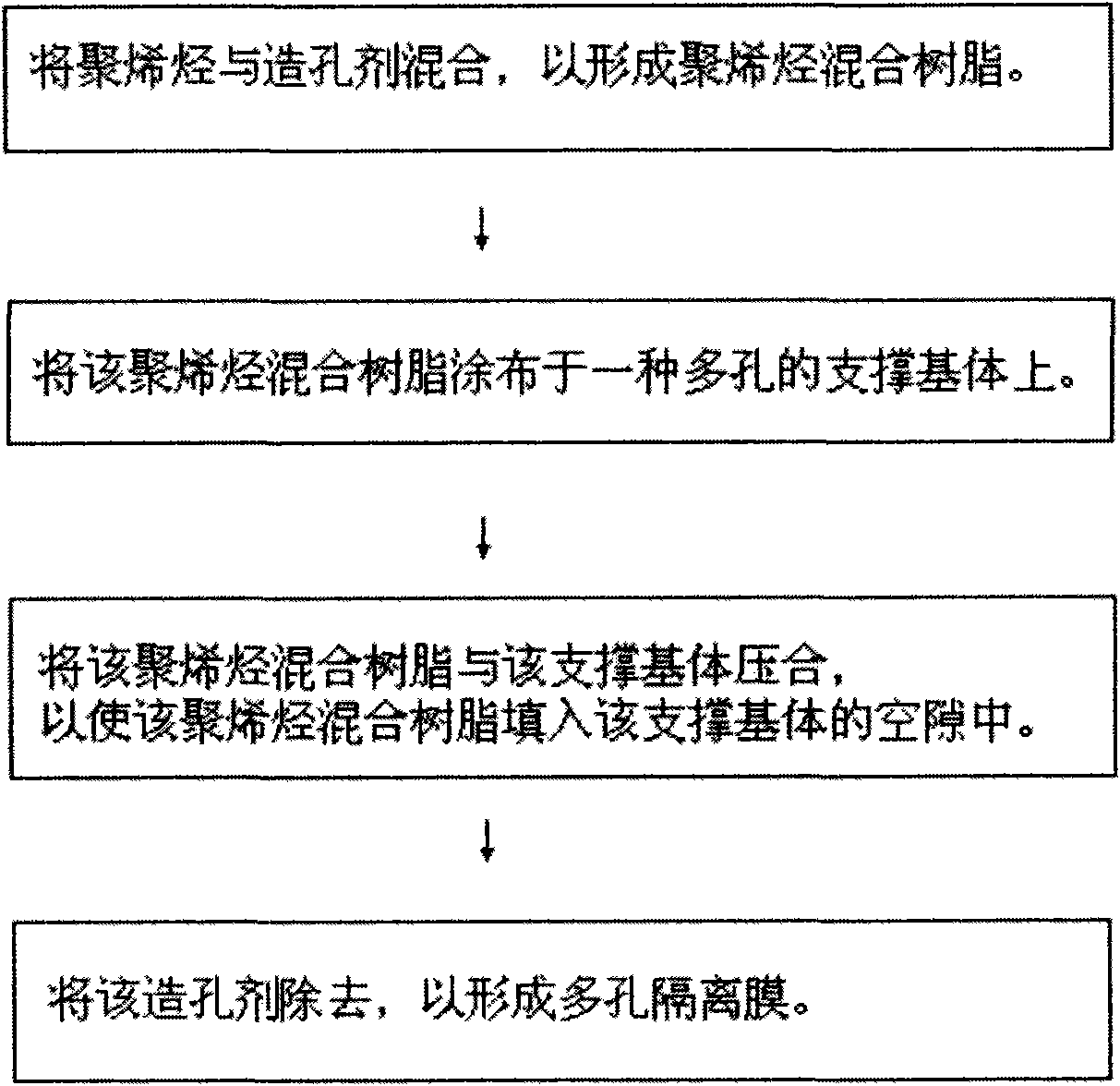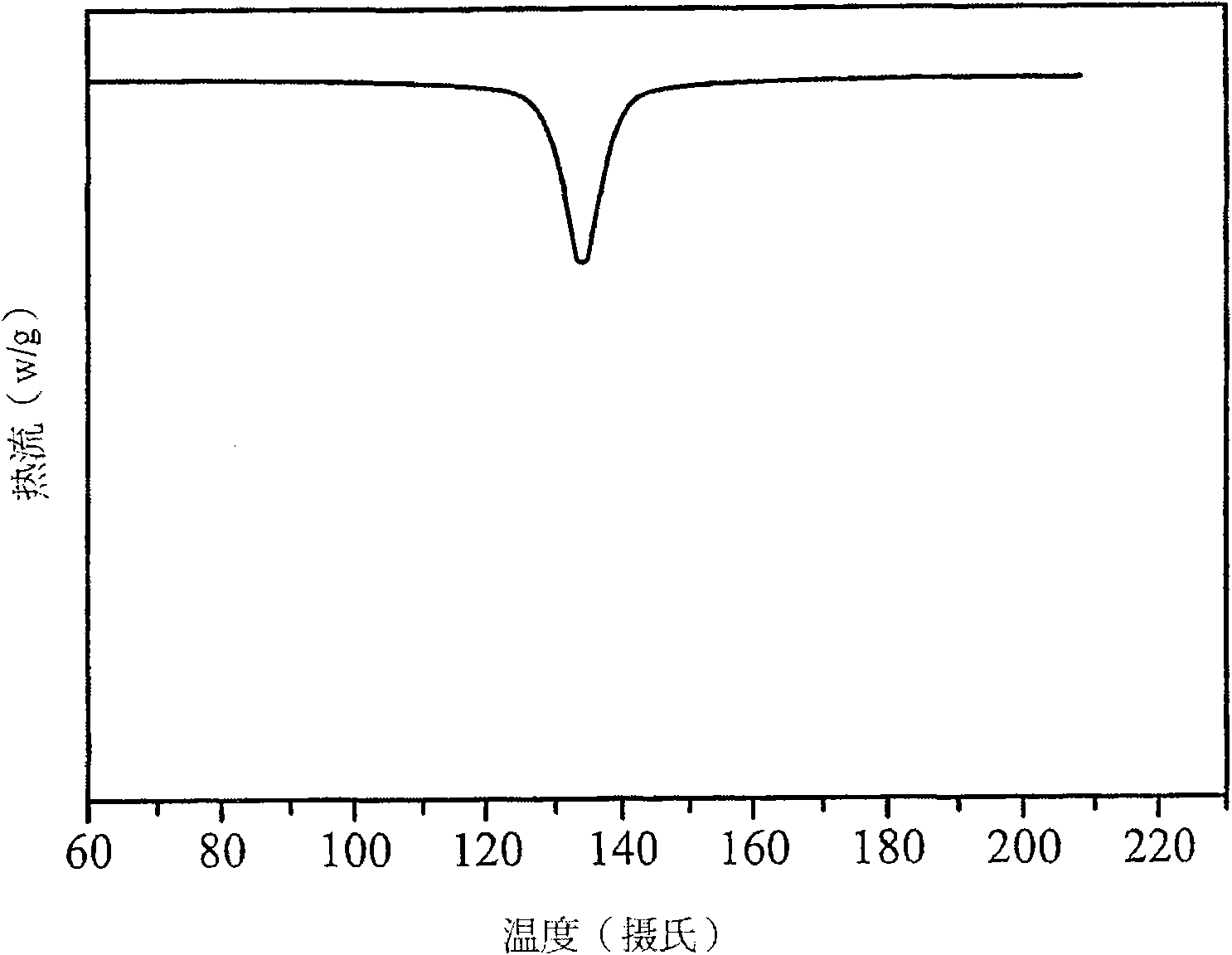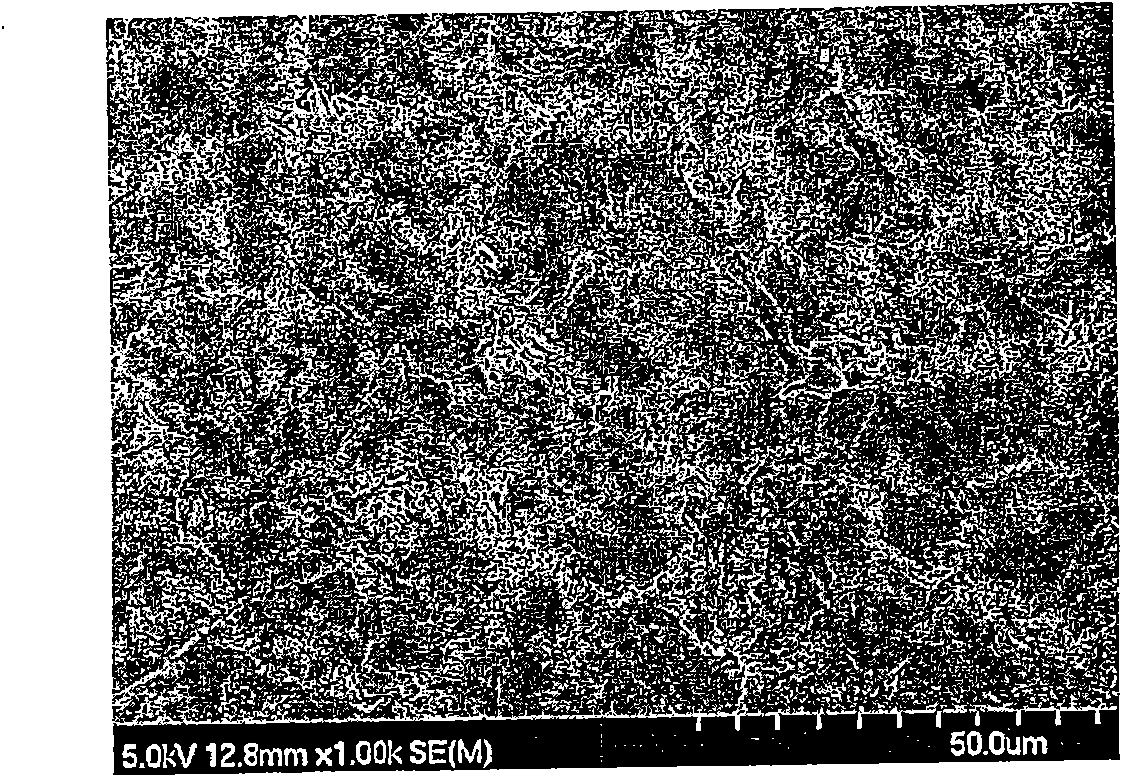Lithium battery isolation membrane and method for manufacturing same
A manufacturing method and isolation film technology, which can be applied to battery pack components, circuits, electrical components, etc., and can solve problems such as battery short circuit and high temperature combustion.
- Summary
- Abstract
- Description
- Claims
- Application Information
AI Technical Summary
Problems solved by technology
Method used
Image
Examples
Embodiment 1
[0027] First, 60 grams of high-density polyethylene and 40 grams of low-molecular-weight wax (with 18 carbon atoms) were placed in a kneader and mixed at 150° C. for 30 minutes. Then, the mixed polyethylene resin solution is coated on the polyacrylonitrile (PAN) non-woven fabric by thermal coating, the coating temperature is 170°C, and the pressure is controlled at 40-70kg / cm 2 In the range. Next, the polyethylene resin is laminated with the PAN non-woven fabric to form a composite film. Finally, the composite membrane was placed in hexane to extract the small molecular weight wax, and then pressed to form a porous high-density polyethylene / PAN non-woven composite membrane with an average pore size of 28 microns, a thickness of 27 microns and a porosity of 63. %.
[0028] refer to figure 2 The DSC thermogram of the shown porous high-density polyethylene / PAN nonwoven composite film. It can be seen from the figure that the composite film manufactured in this example only ha...
Embodiment 2
[0032] First, 70 grams of high-density polyethylene and 30 grams of low molecular weight wax (with 18 carbon atoms) were placed in a kneader and mixed at 150° C. for 30 minutes. Then, apply the mixed polyethylene resin solution on the polyacrylonitrile (PAN) non-woven fabric by thermal coating, the coating temperature is 170°C, and the pressure is controlled at 40-70kg / cm 2 In the range. Next, the polyethylene resin is laminated with the PAN non-woven fabric to form a composite film. Finally, the composite membrane is placed in hexane to extract the small molecular weight wax, and then pressed to make a porous high-density polyethylene / PAN non-woven composite membrane, which has an average pore size of 22 microns, a thickness of 24 microns and a porosity of 49%.
Embodiment 3
[0034] First, 80 grams of high-density polyethylene and 20 grams of low-molecular-weight wax (with 18 carbon atoms) were placed in a kneader and mixed at 150° C. for 30 minutes. Then, apply the mixed polyethylene resin solution on the polyacrylonitrile (PAN) non-woven fabric by thermal coating, the coating temperature is 170°C, and the pressure is controlled at 40-70kg / cm 2In the range. Next, the polyethylene resin is laminated with the PAN non-woven fabric to form a composite film. Finally, the composite membrane is placed in hexane to extract the small molecular weight wax, and then pressed to make a porous high-density polyethylene / PAN non-woven composite membrane, which has an average pore size of 28 microns, a thickness of 28 microns and a porosity of 42%.
PUM
| Property | Measurement | Unit |
|---|---|---|
| Average pore size | aaaaa | aaaaa |
| Thickness | aaaaa | aaaaa |
| Average pore size | aaaaa | aaaaa |
Abstract
Description
Claims
Application Information
 Login to View More
Login to View More - R&D
- Intellectual Property
- Life Sciences
- Materials
- Tech Scout
- Unparalleled Data Quality
- Higher Quality Content
- 60% Fewer Hallucinations
Browse by: Latest US Patents, China's latest patents, Technical Efficacy Thesaurus, Application Domain, Technology Topic, Popular Technical Reports.
© 2025 PatSnap. All rights reserved.Legal|Privacy policy|Modern Slavery Act Transparency Statement|Sitemap|About US| Contact US: help@patsnap.com



